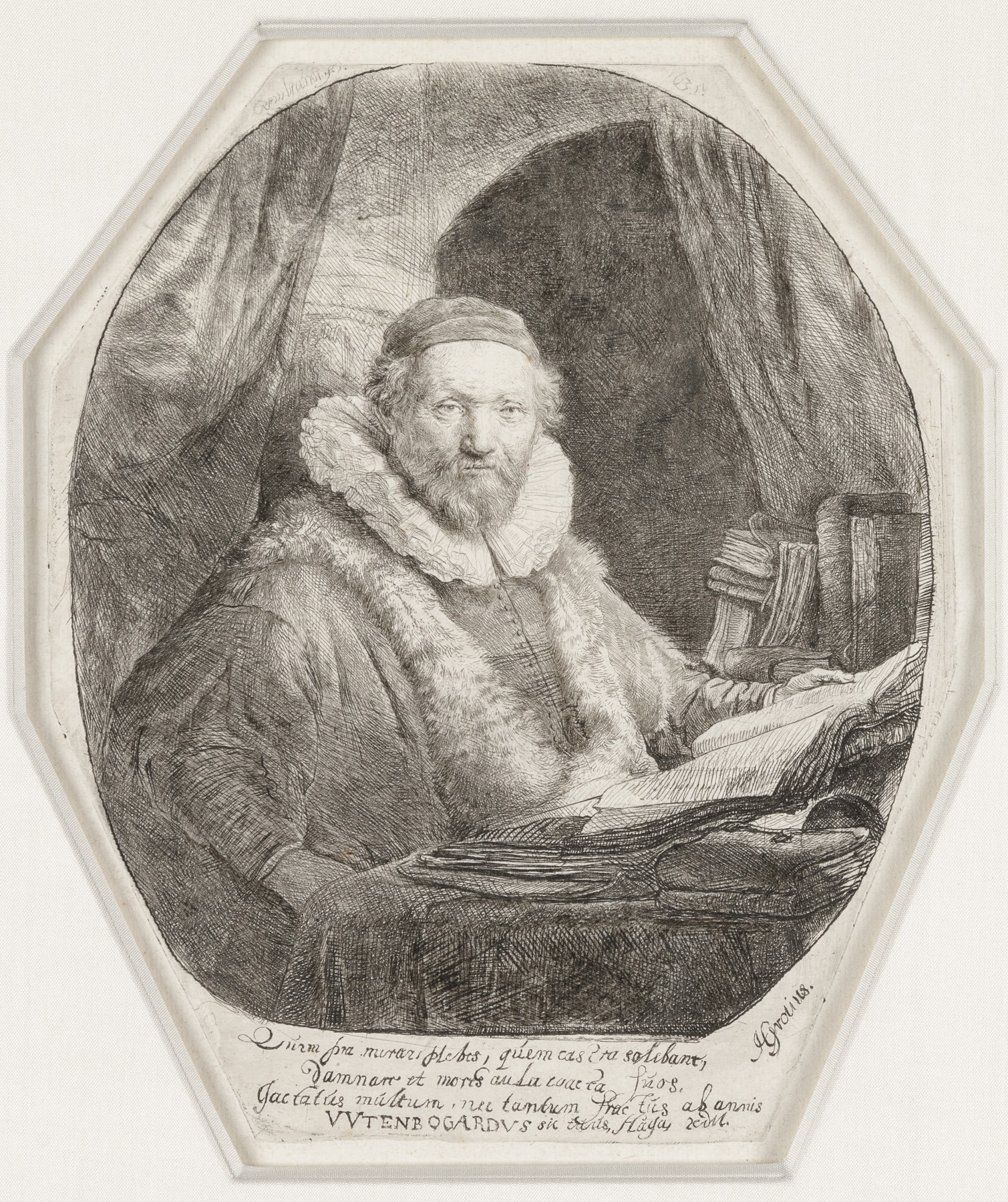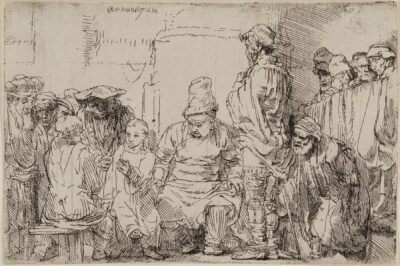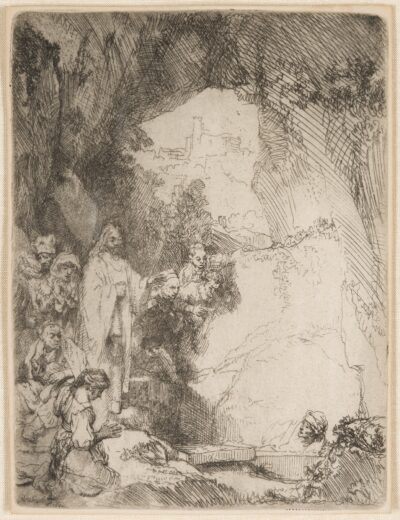Jan Uytenbogaert, Preacher for the Remonstrants
Rembrandt Van Rijn
Jan Uytenbogaert, Preacher for the Remonstrants
etching
1635
An original Rembrandt Van Rijn etching.
1635
Original etching printed in black ink on laid paper bearing the “Coat of Arms of Amsterdam” watermark (Ash/Fletcher 1).
Signed in the plate upper left Rembrandt, dated in the plate upper right 1635.
A strong, evenly printed later 17th century impression of Bartsch’s fifth state of six, Usticke’s third state of six, New Hollstein’s sixth state of nine. Printed after the irregular corners of the octagon at the left and right were evened, and after the appearance of the little cross at the lower left corner of the plate and the two dots behind the date upper right, but well prior to the extensive rework that appears in later states.
Catalog: Bartsch 279 v/vi; Hind 128; Biorklund-Barnard 35-D; Usticke 279 iii/iv; New Hollstein 153 vi/ix.
Platemark: 8 11/16 x 7 5/16 inches Sheet size: 10 3/8 x 8 1/16 inches
As the leader of the Dutch Remonstrants, Uytenbogaert (1577-1644) played a central role in the history of his times. Until his banishment (1618-26), in the wake of the victory of orthodox Calvinism over Remonstrantism, he exercised great political influence, partly in his function as tutor of Prince Frederik Hendrik. After his return to Holland he settled in the Hague, but paid frequent visits to Amsterdam.
The portrait of Uytenbogaert was Rembrandt’s first official commission for an etched portrait. Until that time he had made portrait etchings only of members of his family. The official nature of this portrait is underlined by its Latin inscription (“He who was honored by the pious and the army was damned by the assembled preachers. Worse handled by fate than by time, he now returns, The Hague, to you.”), a common feature of formal etched portraits in the 17th century though a rarity in Rembrandt’s works





